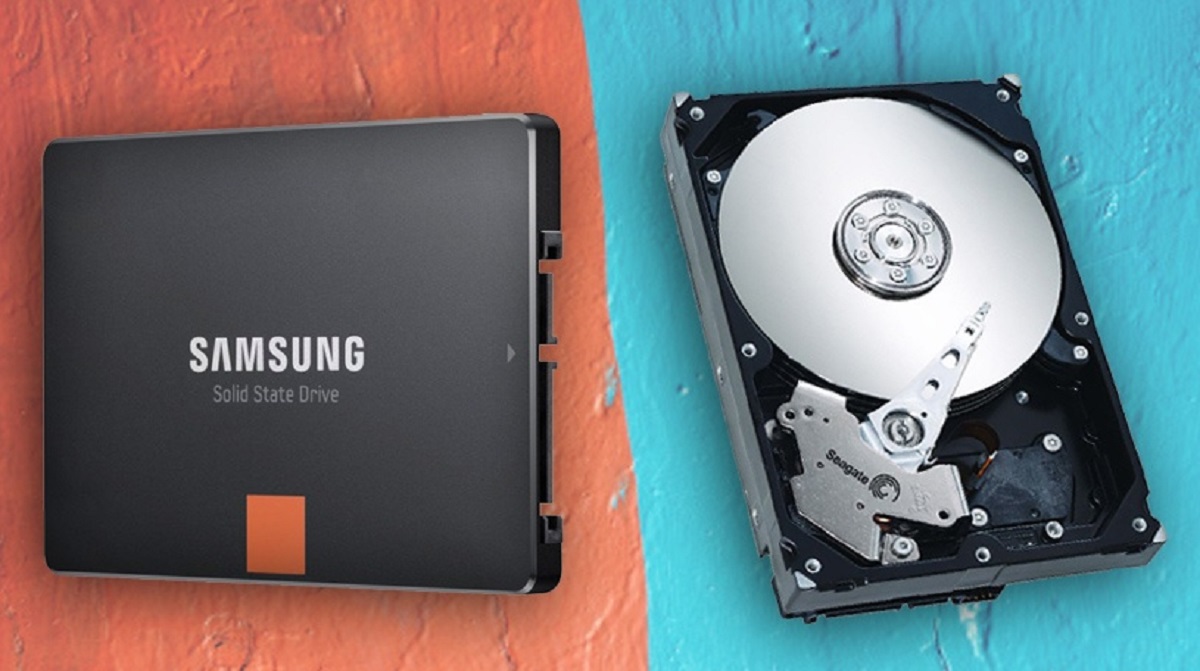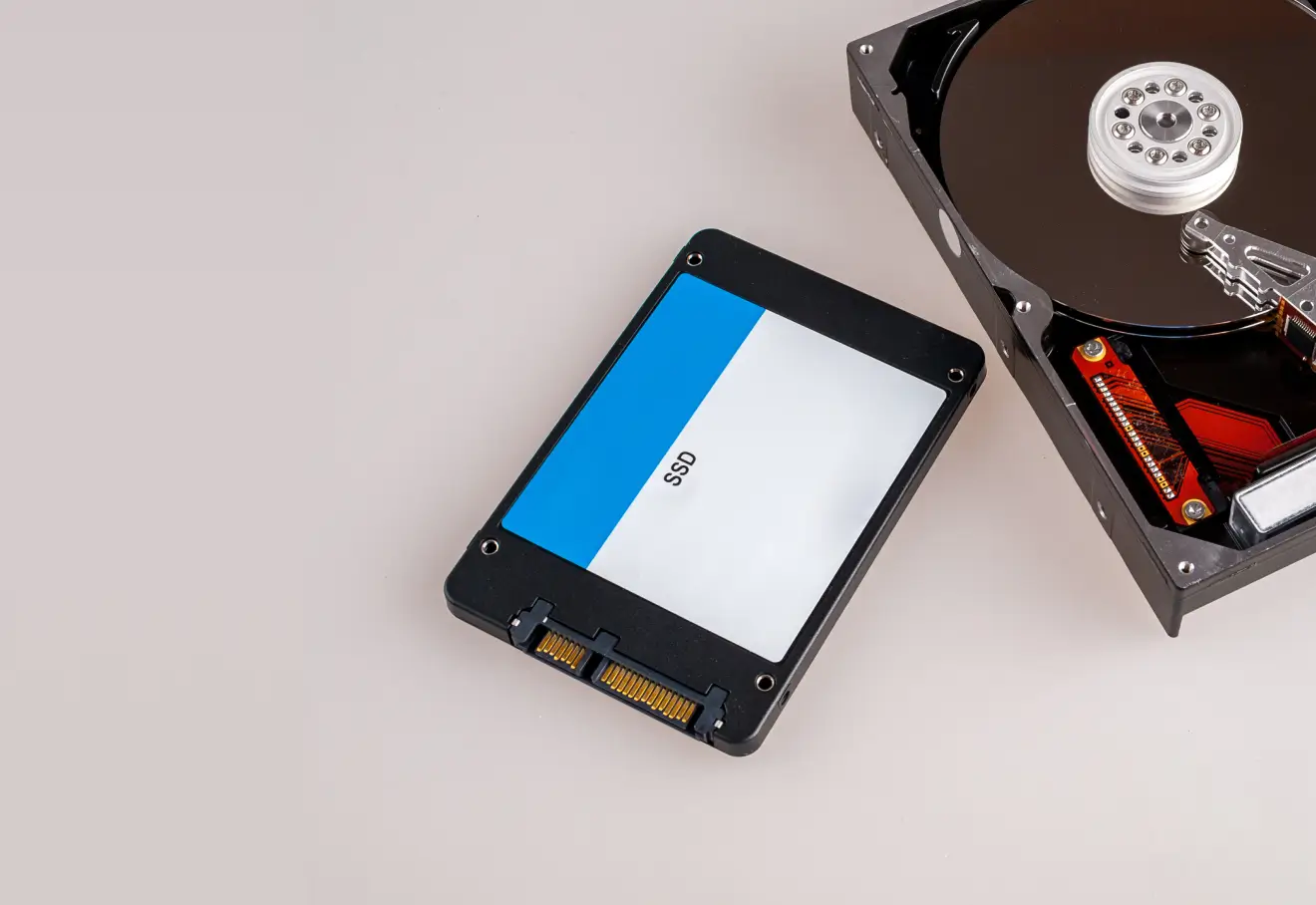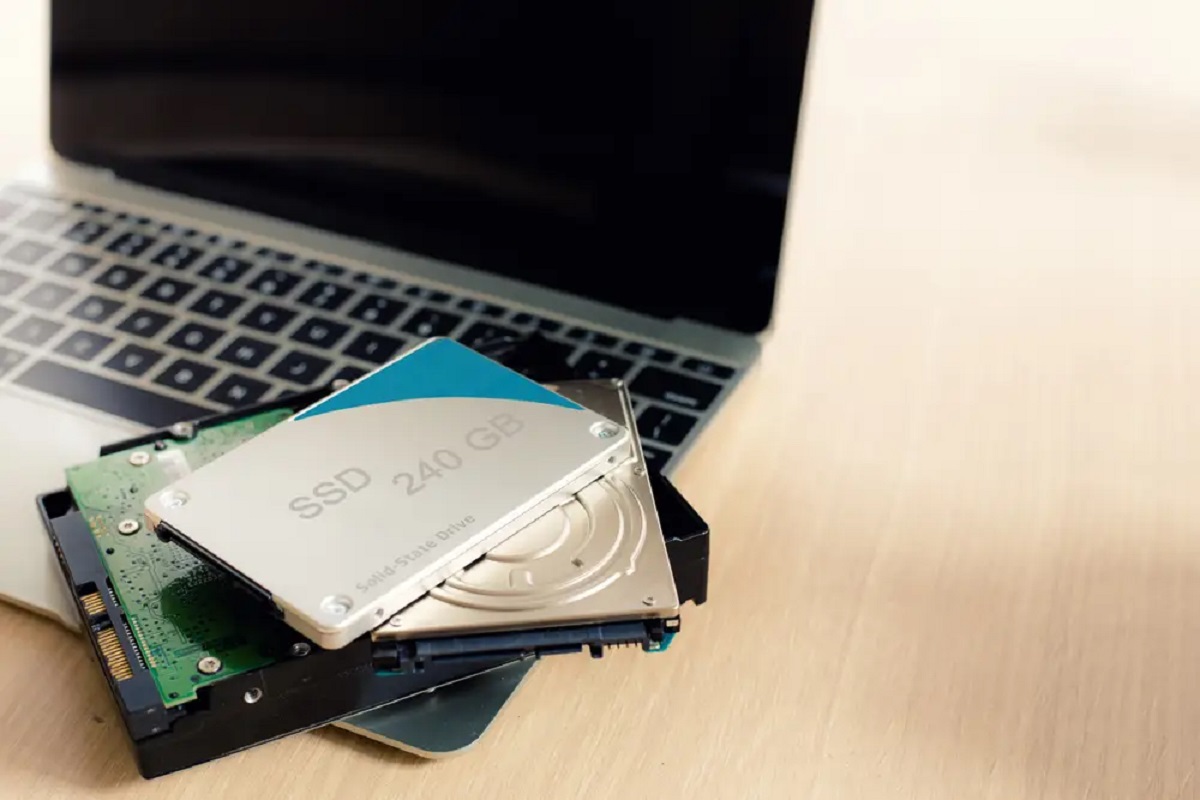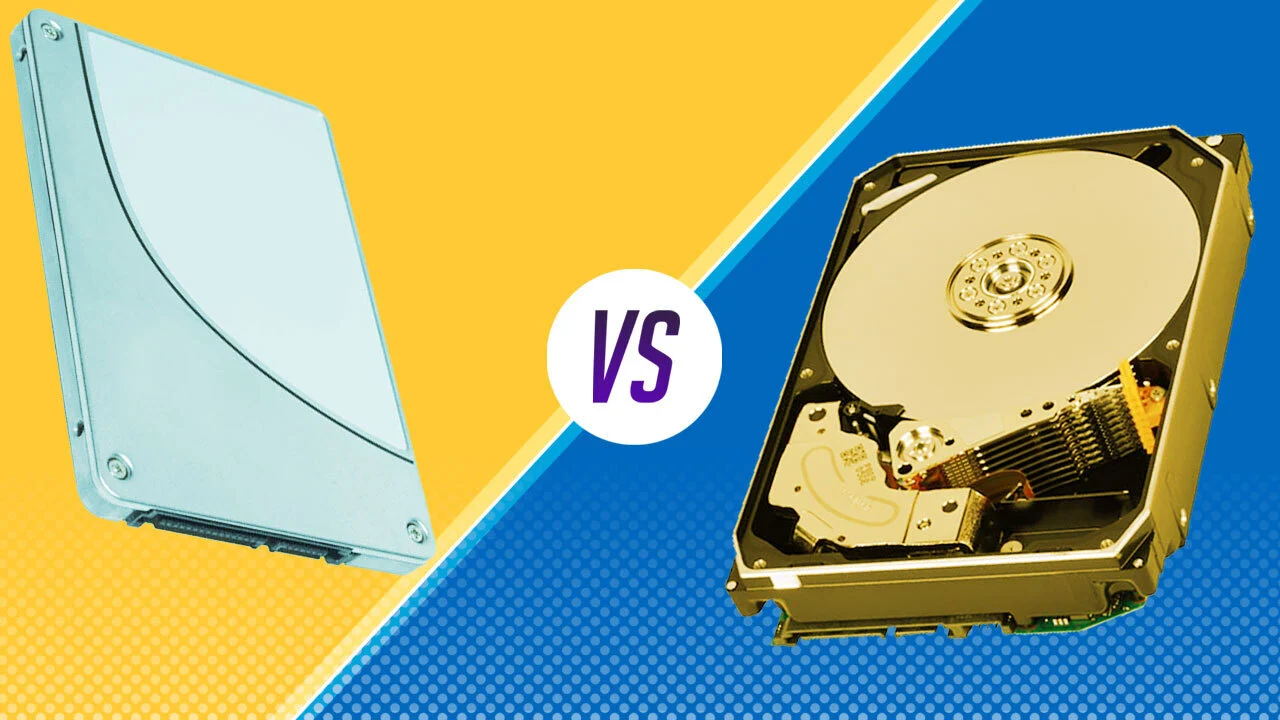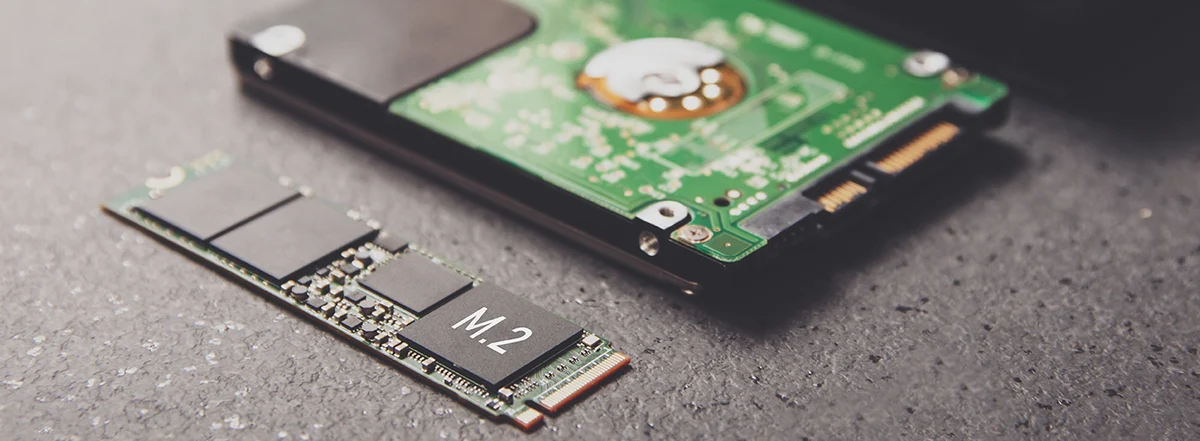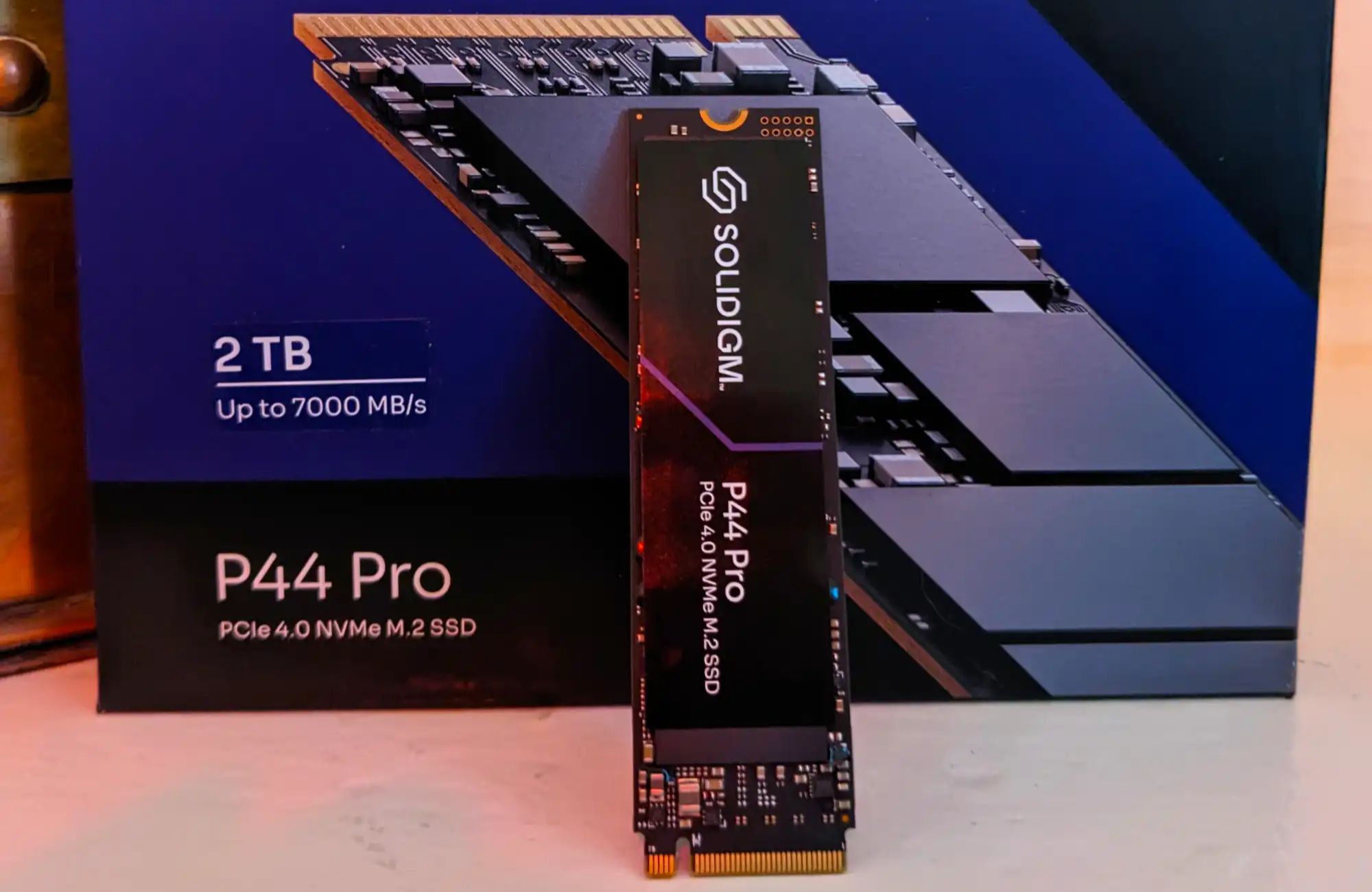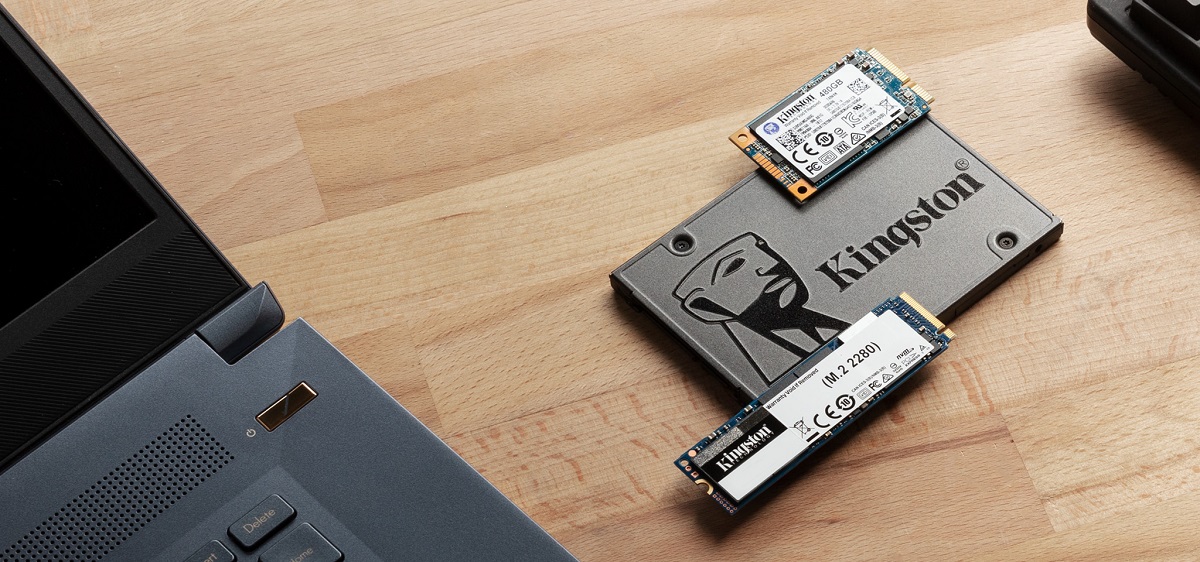Introduction
Welcome to the world of storage devices, where options abound and confusion can quickly set in. In the age-old battle between solid state drives (SSD) and hard drives (HDD), it can be a daunting task to determine which one is right for you. These two types of storage devices have become the most popular choices for storing data on computers and other electronic devices.
As technology progresses and our need for faster and more reliable storage increases, understanding the fundamental differences between SSDs and HDDs becomes paramount. In this article, we will delve into the intricacies of these two types of drives, aiming to clarify the key factors that set them apart.
From their construction and performance to their reliability and price, we will explore various aspects of SSDs and HDDs to help you make an informed decision when it comes to selecting the right storage solution for your needs.
Join us on this journey as we demystify the intricate world of storage drives and help you navigate the often confusing array of options. Whether you are a tech enthusiast or simply looking to upgrade your computer, understanding the difference between SSDs and HDDs is crucial to optimize your system’s performance.
So, without further ado, let’s dive into the world of SSDs and HDDs and explore the fundamental differences that set them apart.
Definition of Solid State Drive (SSD)
A solid state drive (SSD) is a storage device that uses solid-state memory to store and retrieve data. Unlike a traditional hard drive, which uses spinning disks and moving mechanical components to access data, an SSD relies on flash memory to store data electronically. This means there are no moving parts within the drive, making it more durable and less prone to mechanical failure.
SSDs are typically built using NAND flash memory, a type of non-volatile memory that retains data even when the power is turned off. This allows for fast and reliable data access, making SSDs significantly faster than traditional hard drives.
One of the key advantages of SSDs is their speed. Because there are no spinning disks to read from and write to, SSDs can access data much faster than HDDs. This results in faster boot times, quicker application launches, and improved overall system responsiveness.
Another important feature of SSDs is their compact size and lightweight design. Unlike HDDs, which require large spinning platters, SSDs are built using solid-state chips, making them smaller and lighter. This makes SSDs an ideal choice for portable devices such as laptops and ultrabooks, where space and weight are premium considerations.
In terms of durability, SSDs have a clear advantage over HDDs. Without any moving parts, SSDs are less susceptible to damage from drops, bumps, and vibrations. They are also more resistant to temperature extremes, making them a reliable storage solution in harsh environments.
SSDs also consume less power than traditional hard drives. Because they don’t require any power to spin disks or move mechanical parts, SSDs are more energy-efficient. This can result in longer battery life for portable devices and reduced electricity costs for desktop computers.
While SSDs offer numerous advantages, they do come with some limitations. The main drawback is their relatively higher cost per gigabyte compared to HDDs. SSDs are currently more expensive to manufacture, which translates into a higher price tag for consumers. However, prices have been steadily decreasing, making SSDs more affordable over time.
In summary, a solid state drive (SSD) is a storage device that uses solid-state memory to store and retrieve data. With their speed, durability, and compact design, SSDs have become the go-to choice for those looking to enhance their system’s performance and reliability.
Definition of Hard Drive (HDD)
A hard drive (HDD), also known as a hard disk drive, is a traditional storage device that uses magnetism to store and retrieve data. Unlike solid state drives (SSDs) that rely on flash memory, HDDs use spinning disks, also known as platters, to store data. The platters are coated with a magnetic material that allows data to be read and written by a mechanical arm with a read/write head.
Hard drives have been the primary storage solution for computers for several decades. They are known for their high capacity and relatively low cost per gigabyte. HDDs are available in various sizes, typically ranging from 500GB to several terabytes, allowing users to store a vast amount of data, including documents, photos, videos, and applications.
One of the key advantages of HDDs is their affordability. When compared to solid state drives, HDDs generally offer a lower cost per gigabyte. This makes them an attractive option for users who require large amounts of storage at a reasonable price.
Another distinguishing feature of HDDs is their compatibility. They have been widely used in computers and other electronic devices for decades, making them compatible with older systems and widely available for upgrading or replacing existing drives.
Although HDDs have their advantages, they are inherently slower than SSDs. The mechanical components involved in reading and writing data, such as the spinning platters and the moving read/write head, contribute to slower access times and slower overall performance. This can result in longer boot times, slower application launches, and reduced system responsiveness.
Furthermore, HDDs are more susceptible to damage from drops, bumps, and vibrations, as they rely on delicate moving parts. In addition, the presence of spinning disks generates noise and heat. This can be a concern for users who require a quiet and cool computing environment.
On the other hand, HDDs are known for their longevity. With proper care and maintenance, hard drives can last for several years, making them a reliable storage solution. They are also capable of handling a high volume of read and write operations, making them well-suited for applications that require frequent data access.
In summary, a hard drive (HDD) is a traditional storage device that uses magnetism and spinning disks to store and retrieve data. With their affordability, large capacity, and compatibility, HDDs continue to be a popular choice for individuals and businesses that require ample storage space. However, their slower performance and susceptibility to damage should be taken into consideration when choosing a storage solution.
Technology and Construction
The fundamental difference between solid state drives (SSDs) and hard drives (HDDs) lies in their technology and construction. While both devices serve the purpose of storing and retrieving data, they do so in vastly different ways.
SSDs rely on NAND flash memory, a type of non-volatile memory that retains data even when the power is turned off. Inside an SSD, multiple flash memory chips are organized into memory banks, which are connected to a controller that manages data flow and storage operations. When data needs to be read or written, the controller sends instructions to the memory banks, ensuring efficient data access.
On the other hand, HDDs consist of one or more spinning disks, or platters, coated with a magnetic material. Data is stored on these platters in the form of magnetic charges. A mechanical arm with a read/write head moves across the platters to read and write data. This arm is controlled by a motor, which spins the platters at high speeds, typically ranging from 5,400 to 7,200 revolutions per minute (RPM).
The difference in technology and construction results in a significant contrast in performance between SSDs and HDDs. SSDs are known for their superior speed and responsiveness. With no moving parts involved, data access is near-instantaneous, resulting in faster boot times, quicker application launches, and reduced file transfer times.
HDDs, on the other hand, are relatively slower due to the mechanical components involved. The spinning platters and the read/write head introduce latency and seek times, causing a delay in accessing data. This can lead to longer boot times, slower application loading, and generally slower system performance.
In terms of form factor, SSDs generally have a smaller and lighter design compared to HDDs. This is because SSDs utilize solid-state chips for storage, allowing for a more compact and portable form. HDDs, on the other hand, require larger physical platters and moving parts, resulting in a bulkier and heavier design.
While both SSDs and HDDs have their advantages and disadvantages, the technology and construction play a crucial role in determining their performance and physical characteristics. SSDs offer fast and reliable data access with their solid-state memory, while HDDs provide ample storage capacity but at the cost of slower access times and mechanical limitations.
Performance
When it comes to performance, solid state drives (SSDs) outshine hard drives (HDDs) in several key areas. The difference in performance stems from the fundamental technological differences between the two storage devices.
One of the main advantages of SSDs is their faster data access times. With no mechanical parts involved, SSDs can read and write data at near-instantaneous speeds. This translates to faster boot times, quicker application launches, and improved overall system responsiveness. Tasks such as file transfers and data processing are also significantly faster with SSDs.
In contrast, HDDs rely on spinning disks and moving read/write heads, which introduce latency and seek times. This results in slower data access and longer wait times. HDDs are better suited for tasks that require sustained data transfer rates, such as large file transfers or media streaming.
In terms of random access speed, SSDs have a clear advantage. The random access speed refers to the time it takes to access a particular piece of data from anywhere on the storage device. Since SSDs can access any data location equally quickly, they are well-suited for tasks that involve random access, such as multitasking and running multiple applications simultaneously.
HDDs, on the other hand, struggle with random access speeds due to the mechanical components involved. The read/write heads need to physically move to the desired data location, resulting in longer access times. This makes HDDs more suitable for sequential data access, such as storing large media files or performing continuous read/write operations.
In terms of data transfer rates, SSDs often outperform HDDs. SSDs can deliver consistent high-speed data transfers, ensuring fast and efficient file operations. This makes them ideal for applications that require large amounts of data to be read or written, such as video editing or gaming.
HDDs, although slower in data transfer rates, can still deliver satisfactory performance for everyday computing tasks. They are well-suited for storing large files, such as multimedia libraries, where sustained transfer rates are more important than instant access.
It’s worth noting that performance can vary depending on the specific model and specifications of the SSD or HDD. Factors such as interface type (SATA, NVMe), drive capacity, and cache size can impact the overall performance of the storage device.
In summary, SSDs offer faster data access times, superior random access speeds, and higher data transfer rates compared to HDDs. These performance advantages make SSDs the preferred choice for users seeking optimal speed and responsiveness in their computing experience. However, HDDs still have a role to play in scenarios where high storage capacity and sustained transfer rates are more critical than instant access.
Reliability and Durability
When it comes to reliability and durability, solid state drives (SSDs) have a clear advantage over hard drives (HDDs) due to their design and lack of mechanical moving parts.
One of the main reasons why SSDs are considered more reliable is because they don’t have any spinning disks or moving read/write heads. This eliminates the risk of mechanical failure, which is a common issue with HDDs. The absence of moving parts also results in lower wear and tear, reducing the chance of physical damage and data loss.
HDDs, on the other hand, are prone to failure due to their mechanical nature. The spinning disks and moving read/write heads are susceptible to wear and tear over time. Any damage to these components can lead to data loss or a complete drive failure. External factors such as drops, bumps, and vibrations can also cause damage to HDDs, further compromising their reliability.
In terms of durability, SSDs have the upper hand. They are built using solid-state chips, which are generally more resistant to physical shocks and vibrations. This makes SSDs an ideal storage solution for portable devices such as laptops and tablets, as they can better withstand the rigors of daily use and transportation.
HDDs, with their delicate mechanical components, are more sensitive to physical shocks and vibrations. Any sudden impact or movement can result in platter misalignment, head crashes, or other mechanical failures. This makes HDDs more vulnerable to damage, especially when used in portable devices or in environments prone to vibrations, such as vehicles.
SSDs are also more resistant to temperature extremes compared to HDDs. Because SSDs do not generate as much heat as HDDs, they are not as affected by high temperatures. This can be particularly advantageous in environments where temperature control is challenging, such as industrial settings or poorly ventilated areas.
On the other hand, HDDs, due to their mechanical nature and the heat generated by the spinning disks, can be more sensitive to high temperatures. Excessive heat can negatively impact the performance and longevity of an HDD, making temperature regulation important in maintaining its reliability.
In terms of data integrity, SSDs excel due to their built-in error-correcting algorithms and wear-leveling mechanisms. These features ensure that data is stored and retrieved accurately, minimizing the risk of data corruption. HDDs, while also employing error correction techniques, are more prone to data corruption due to the mechanical nature of their operation.
In summary, SSDs offer superior reliability and durability compared to HDDs. The absence of moving parts in SSDs reduces the risk of mechanical failure, making them less prone to physical damage and data loss. Additionally, SSDs are more resistant to temperature extremes and vibrations, making them a reliable storage solution in a variety of environments.
Capacity
When it comes to storage capacity, hard drives (HDDs) have traditionally held the advantage over solid state drives (SSDs). HDDs are known for their ability to offer larger storage capacities at a lower cost per gigabyte.
HDDs are available in a wide range of capacities, starting from a few hundred gigabytes (GB) and going up to several terabytes (TB). This makes them suitable for individuals or businesses that require a large amount of storage space, such as multimedia production houses, data centers, or archival purposes.
On the other hand, SSDs have historically offered smaller storage capacities compared to HDDs, although capacity options have been expanding over time. SSD capacities typically range from 128GB to 4TB or more, with higher capacities becoming increasingly common as technology advances and manufacturing costs decrease.
Despite the historically larger sizes of HDDs, SSDs have gained popularity due to their overall performance benefits. as well as the increasing need for faster and more reliable storage solutions. SSDs are now available in capacities that can meet the needs of most individuals and businesses, offering a balance between speed and storage space.
It’s worth noting that the required storage capacity depends on individual needs and usage patterns. For casual users who mainly browse the web, stream media, and store documents, smaller SSD capacities may be sufficient. SSDs are particularly well-suited for operating systems, applications, and frequently accessed files, where their speed greatly enhances overall system performance.
In contrast, individuals or organizations that require mass storage capabilities for large media libraries, extensive data backups, or intensive data processing may still prefer HDDs due to their cost-effective larger capacities. HDDs are also commonly used in network-attached storage (NAS) setups, where a high volume of data needs to be stored and accessed by multiple devices simultaneously.
It’s important to consider future storage needs when choosing between an SSD and HDD. As technology advances and file sizes continue to grow, the need for larger storage capacities becomes more prevalent. Keep in mind that both SSD and HDD capacities will continue to expand, with SSDs gradually becoming more widely available in larger capacities.
In summary, while HDDs still maintain an edge in terms of overall storage capacity, SSDs are catching up and offer a balance between speed and storage space. The choice between the two ultimately depends on individual needs, budget considerations, and the importance of factors such as performance, reliability, and long-term storage requirements.
Power Consumption
Power consumption is an important consideration when comparing solid state drives (SSDs) and hard drives (HDDs). The power requirements of these storage devices can impact battery life in portable devices and overall energy efficiency in desktop systems.
SSDs are known for their energy efficiency, consuming significantly less power compared to HDDs. One of the main reasons for this is the absence of moving parts in SSDs. With no spinning disks or mechanical read/write heads, SSDs do not require power-hungry motors to operate. They rely on solid-state memory chips and a controller to access data, resulting in lower power consumption overall.
Lower power consumption in SSDs translates into several benefits. In portable devices such as laptops or tablets, SSDs can contribute to longer battery life. The reduced power draw allows the device’s battery to last longer, providing users with extended usage time for on-the-go computing.
This advantage is especially crucial for users who rely on their portable devices for work, travel, or entertainment, where a longer battery life can make a significant difference in productivity and convenience. Additionally, lower power consumption in SSDs contributes to lower operating temperatures, reducing the need for extensive cooling solutions and improving system stability.
HDDs, on the other hand, require more power to operate due to their mechanical nature. The spinning platters and moving read/write heads draw additional power, contributing to higher power consumption compared to SSDs. This higher power draw can result in shorter battery life in portable devices and increased energy consumption in desktop systems.
It’s important to note that while SSDs are generally more power-efficient, energy consumption can vary depending on usage patterns and device configurations. Intensive tasks such as sustained data transfers or high-performance computing can result in increased power draw for both SSDs and HDDs.
However, even in scenarios where power draw is comparable, SSDs still have an advantage in terms of power efficiency because they can complete operations much faster than HDDs. This allows SSDs to complete tasks more quickly and return to idle states, reducing the overall energy consumption and heat generation.
In summary, SSDs offer lower power consumption compared to HDDs due to their solid-state design and absence of moving parts. This energy efficiency contributes to longer battery life in portable devices and overall energy savings in desktop systems. Choosing an SSD can be beneficial for users looking to maximize battery life, reduce energy consumption, and create a more environmentally friendly computing setup.
Noise and Heat Generation
Noise and heat generation are important factors to consider when comparing solid state drives (SSDs) and hard drives (HDDs). The technologies used in these storage devices can have a significant impact on the overall noise levels and heat generated by a system.
SSDs are known for their silent operation. Since they do not contain any moving parts, the noise produced by an SSD is virtually non-existent. This is in stark contrast to HDDs, which generate noticeable noise due to the spinning platters and moving read/write heads. The spinning disks can produce a humming or whirring sound, especially during heavy disk activity. This noise can be an annoyance for users seeking a quiet computing environment.
The absence of moving parts also means that SSDs generate minimal heat. Without spinning disks or motors, SSDs produce very little heat during operation. This allows for more efficient cooling and temperature management within a system. Furthermore, lower heat generation contributes to a more stable and reliable system, reducing the risk of overheating and component failure.
HDDs, on the other hand, can generate a significant amount of heat due to their mechanical nature. The spinning platters, moving read/write heads, and drive motors all contribute to heat generation. This can result in higher operating temperatures, especially in systems with multiple HDDs or those subjected to heavy disk usage. Adequate cooling becomes crucial when using HDDs to maintain optimal performance and prevent potential damage due to overheating.
The heat generated by HDDs can also contribute to increased power consumption. Higher temperatures require more energy to cool down the system, resulting in increased energy usage and potentially higher electricity costs over time. Moreover, the additional heat can create a more uncomfortable working environment, particularly in small spaces or during hot weather conditions.
In contrast, the cool and silent operation of SSDs makes them an ideal choice for noise-sensitive environments. Whether used in offices, studios, or bedrooms, SSDs allow for a quieter and more pleasant computing experience. The absence of noise and reduced heat generation can contribute to a more comfortable working environment and improved overall user satisfaction.
It’s important to note that while SSDs offer silent operation and lower heat generation, they can still become warm during extended periods of intense activity. However, the heat levels are generally well within acceptable limits and can be effectively managed with standard cooling solutions.
In summary, SSDs provide a noise-free and cool operating environment due to their lack of moving parts and minimal heat generation. On the other hand, HDDs generate noticeable noise due to spinning disks and moving parts, as well as generate more heat during operation. These factors make SSDs the preferred choice for those seeking silent, cool, and efficient computing experiences.
Price
Price is often a key consideration when choosing between solid state drives (SSDs) and hard drives (HDDs) for storage needs. Historically, HDDs have held the advantage in terms of affordability, offering larger storage capacities at a lower cost per gigabyte.
HDDs have been around for decades and are produced in large quantities. This mass production helps keep their prices relatively lower compared to SSDs. HDDs are available in a wide range of capacities, making them a budget-friendly choice for individuals and businesses that require ample storage space without breaking the bank.
SSDs, on the other hand, have historically been more expensive compared to HDDs due to their newer technology and higher manufacturing costs. The use of solid-state memory chips and advanced controllers adds to the overall cost of producing SSDs. However, SSD prices have been gradually decreasing as technology advances and economies of scale improve.
As a result, SSDs have become more affordable and accessible to a wider range of users. The decreasing price gap between SSDs and HDDs has made SSDs a viable option for those seeking improved performance, reliability, and faster data access speeds.
When considering the price factor, it’s important to take into account the specific needs and budget limitations. While SSDs are typically more expensive, the benefits they offer, such as faster performance and improved responsiveness, can outweigh the higher price tag for many users.
In addition, the price of an SSD can be influenced by factors such as storage capacity, brand reputation, and the specific interface (e.g., SATA, NVMe) used. High-end SSDs with larger capacities and faster transfer speeds tend to be more expensive, while budget-friendly options with lower capacities are more cost-effective.
It’s also important to consider the lifecycle cost when comparing SSDs and HDDs. SSDs generally require less maintenance and have a longer lifespan, which can result in overall cost savings over time. Additionally, the power efficiency of SSDs can lead to reduced energy consumption and lower electricity bills.
Ultimately, the choice between an SSD and HDD based on price depends on individual needs, budget considerations, and priorities. While HDDs offer cost-effectiveness and larger storage capacities, SSDs provide improved performance, reliability, and faster data access speeds, albeit at a higher initial price.
In summary, HDDs have traditionally been more affordable, making them a popular choice for users seeking cost-effective storage solutions with large capacities. However, the decreasing prices of SSDs are making them a viable option for users looking for improved performance and faster data access speeds. It’s important to assess individual needs, budget limitations, and the long-term cost-effectiveness when deciding between an SSD and HDD based on price.
Conclusion
Choosing between a solid state drive (SSD) and a hard drive (HDD) depends on a variety of factors, including performance needs, storage requirements, budget constraints, and personal preferences. Understanding the differences between SSDs and HDDs can help you make an informed decision that aligns with your specific needs and priorities.
SSDs offer numerous advantages over HDDs. They provide faster data access times, improved overall system performance, and enhanced reliability due to their lack of moving parts. SSDs are also more durable, generating less heat, and consuming less power. Additionally, SSDs have the advantage of silent operation, making them ideal for noise-sensitive environments.
HDDs, on the other hand, still maintain certain advantages. They offer larger storage capacities at a lower cost per gigabyte, making them a cost-effective choice for those needing ample storage space. HDDs are also widely compatible and readily available, making them suitable for individuals or businesses looking to upgrade or replace existing drives without significant compatibility issues.
As technology advances and manufacturing costs continue to decrease, the price gap between SSDs and HDDs is narrowing. SSDs are becoming more affordable, making them a viable option for users seeking superior performance and reliability.
In summary, when choosing between an SSD and an HDD, it’s crucial to consider your specific needs, including the speed and performance requirements, the amount of storage space required, budget constraints, and the desired longevity of the storage solution. Both SSDs and HDDs have their own unique strengths and benefits, and the choice ultimately depends on finding the right balance that suits your individual needs and preferences.
Whether you prioritize speed, durability, reliability, cost-effectiveness, or a combination of these factors, SSDs and HDDs offer distinct features to cater to a wide range of storage needs. Take the time to evaluate your requirements and consider the long-term benefits to make an informed decision that aligns with your goals and ensures a satisfying computing experience.







